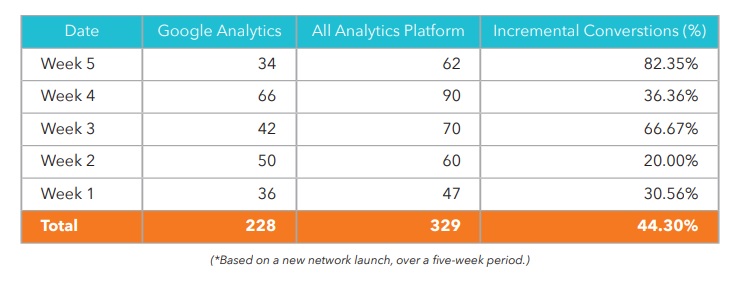Which Attribution Model is Right for Your Business? | Case Study
For brand marketers, ever concerned about ROI, measuring the efficacy of their campaigns to tell if they’re actually driving sales, is a constant headache. But how to attribute a sale to a given piece of marketing as the number of marketing channels out there seems to grow exponentially? It turns out there are more than one attribution model, which comes as both a curse and a blessing.
An Attribution Model is critical because it helps you figure out where to put future resources. Attribution essentially says a certain channel led to someone buying something. So if a certain channel is the one doing the job, it may need more of a budget next year.
Is Attribution is the answer? Yes, yet the challenge is nobody knows which model of attribution actually works. There are a few. Like Single-source, which is the most common model. It’s also the most deeply flawed. It’s got a few other names, like last-click or last-touch, or first-click. Essentially, it gives the channel that was the last one (or the first one) to present an advertisement to a converting customer the credit.
In this case study, we’ll take a look at the journey of a 3Q Digital B2C Client. Exploring different attribution models as the client wanted to test into native advertising as a channel expansion in order to support their customer acquisition efforts.
PROBLEM
The client wanted to test into native advertising as a channel expansion in order to support their customer acquisition efforts. 3Q implemented a content amplification strategy across various native networks to help introduce new users to the brand and drive paid subscriptions. At the beginning of the engagement, performance was measured on last-click, which initially produced strong results. Over time, however, the efficacy of this attribution model declined, and failed to gauge the full impact of native efforts.
SOLUTION
After reporting on Google Analytics numbers for multiple quarters, the client introduced a supplementary analytics platform that allowed customized attribution modeling for individual paid channels. For native, 3Q Digital configured a tailored setup that credited conversions to the click immediately prior to purchase from brand search and direct. This meant if a user engaged with a native ad and then converted through brand search or direct in the following session, native would receive credit for that paid subscription.
This view of native helps demonstrate how the channel’s contribution to a larger media mix can often be overlooked. Because of the low-cost, high-reach nature of the channel, native touchpoints are often found within a significant number of conversion paths. However, because native is not a ‘closer’ channel (or a user experience that converts users within the same session) its value is easily misinterpreted without the right attribution model in place. It is important for brands to closely analyze the actual benefits nativeprovides down-funnel, as they’re often times under-reported.
RESULT
Data showed a 44% lift in conversion volume to native campaigns when attributing last click + previous click from brand search and direct traffic. Because of the subsequent lower CPAs, 3Q had the flexibility to run additional testing while the client increased QoQ investment.
